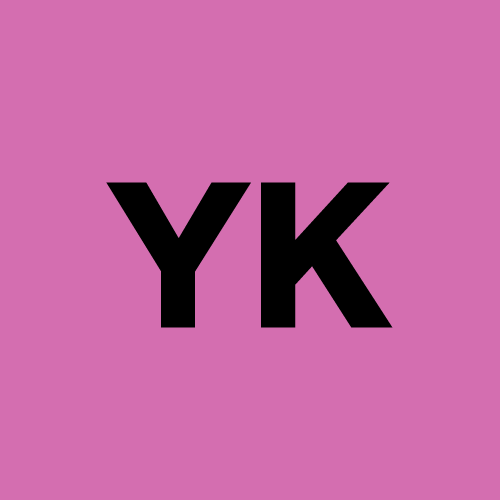Cloud Security for SaaS Businesses: Must-Know Strategies
 yamini k
yamini k
As Software-as-a-Service (SaaS) continues to revolutionize the way businesses operate, ensuring cloud security has become a critical priority. SaaS applications, by design, are cloud-native and accessible over the internet, making them both highly efficient and inherently vulnerable to various cybersecurity threats.
We’ll explore the must-know strategies every SaaS business should implement to secure its cloud infrastructure and protect sensitive customer data. Whether you're a startup or an enterprise-level provider, the following cloud security principles are essential for maintaining trust and compliance.
Why Cloud Security Matters for SaaS
SaaS businesses handle vast amounts of sensitive data, from personally identifiable information (PII) and payment details to intellectual property and user credentials. A single breach can result in:
Financial losses
Reputational damage
Legal repercussions
Loss of customer trust
Moreover, cloud computing introduces a shared responsibility model. While cloud providers like AWS, Azure, and Google Cloud offer robust infrastructure security, the responsibility for application security, access controls, and data protection lies with the SaaS business.
Top Cloud Security Threats Facing SaaS Businesses
Before diving into strategies, it’s important to understand the common cyber threats SaaS companies face:
Data breaches
Account hijacking
Insider threats
Denial-of-service (DoS) attacks
Misconfigured cloud settings
Malware injection
API vulnerabilities
Understanding these threats allows for a proactive approach in building a solid cloud security architecture.
Must-Know Cloud Security Strategies for SaaS Businesses
1. Implement Identity and Access Management (IAM)
IAM is the backbone of any secure cloud environment. It ensures that only authorized users can access specific resources.
Key practices:
Use Multi-Factor Authentication (MFA)
Enforce role-based access control (RBAC)
Regularly audit and revoke unnecessary privileges
Integrate with Single Sign-On (SSO) solutions
These practices reduce the risk of unauthorized access and insider attacks.
2. Encrypt Data at Rest and in Transit
Encryption ensures that even if data is intercepted or accessed, it remains unreadable without proper keys.
Best practices:
Use AES-256 encryption for data at rest
Enable TLS 1.2+ for secure data transmission
Manage encryption keys using Key Management Systems (KMS)
Data encryption is a critical requirement in most compliance frameworks like GDPR, HIPAA, and ISO 27001.
3. Secure APIs
SaaS platforms heavily rely on Application Programming Interfaces (APIs), making them a frequent attack vector.
API security tips:
Implement authentication tokens like OAuth 2.0
Rate-limit requests to prevent API abuse
Use input validation to protect against injection attacks
Regularly scan APIs for vulnerabilities
A robust API security strategy helps prevent data leaks and application-layer attacks.
4. Monitor and Log Everything
Continuous monitoring and logging allow SaaS businesses to detect and respond to incidents in real time.
Tools and techniques:
Use Security Information and Event Management (SIEM) systems
Monitor access logs, configuration changes, and login anomalies
Set up alerts for suspicious activities
Store logs securely and maintain for regulatory compliance
This proactive approach supports incident response and forensic analysis.
5. Conduct Regular Vulnerability Assessments
Routine vulnerability scanning and penetration testing help identify and mitigate security weaknesses before they can be exploited.
Security testing options:
Use automated vulnerability scanners like Nessus or OpenVAS
Perform manual penetration tests for deeper insights
Schedule bug bounty programs to crowdsource threat detection
Integrate DevSecOps into your CI/CD pipelines
Regular assessments are key for maintaining application security in dynamic cloud environments.
6. Secure Your Cloud Configuration
Misconfigurations are among the leading causes of cloud security breaches. Common issues include publicly exposed storage buckets, open ports, and weak permissions.
How to secure configurations:
Use tools like AWS Config, Azure Security Center, or Google Security Command Center
Automate configuration checks with Infrastructure as Code (IaC) tools
Apply the least privilege principle
Regularly review and harden all cloud settings
This minimizes your attack surface and enhances your overall security posture.
7. Data Backup and Disaster Recovery
Having a robust data backup and disaster recovery (DR) plan ensures business continuity during cyber incidents or data loss events.
DR strategy tips:
Automate daily backups to secure, off-site locations
Regularly test data recovery procedures
Encrypt backup data
Establish Recovery Time Objective (RTO) and Recovery Point Objective (RPO)
Business continuity planning is a cornerstone of cyber resilience.
8. Educate Employees and Customers
Human error remains one of the biggest risks in cybersecurity. Educating users strengthens your first line of defense.
Training focus areas:
Phishing awareness
Safe password practices
Understanding social engineering attacks
Reporting suspicious activities
Security awareness training should be conducted quarterly for staff and periodically for customers.
9. Stay Compliant with Regulations
Compliance isn't just a legal obligation—it’s also a way to build trust with customers.
Relevant regulations for SaaS:
GDPR (for businesses handling EU citizen data)
HIPAA (for healthcare-related services)
SOC 2 and ISO 27001 (for general data security)
PCI-DSS (if processing payment data)
Ensure all cloud security controls align with your relevant regulatory standards.
10. Engage a Cloud Security Partner
For growing SaaS companies, partnering with a Managed Security Services Provider (MSSP) or hiring cloud security consultants can enhance in-house capabilities.
They can help with:
24/7 threat monitoring
Incident response planning
Compliance audits
Implementation of zero-trust architectures
This external expertise accelerates your cloud security maturity.
For SaaS businesses, cloud security is not optional—it's mission-critical. As cyber threats evolve and data privacy becomes more scrutinized, securing your cloud infrastructure must be part of your core operational strategy.
By implementing the strategies outlined above—from IAM to encryption*, **monitoring*, and *compliance**—you not only protect your customers' data but also safeguard your brand and business continuity.*
Remember, in the digital age, trust is your most valuable asset*, and nothing protects it better than robust **cybersecurity**.*
Subscribe to my newsletter
Read articles from yamini k directly inside your inbox. Subscribe to the newsletter, and don't miss out.
Written by
